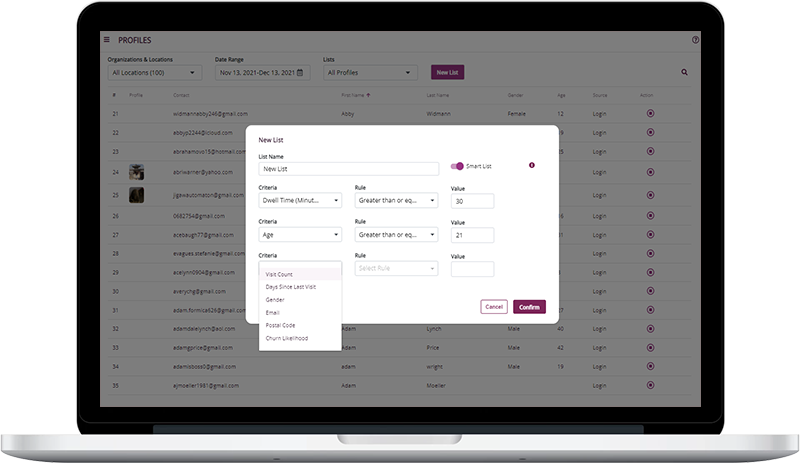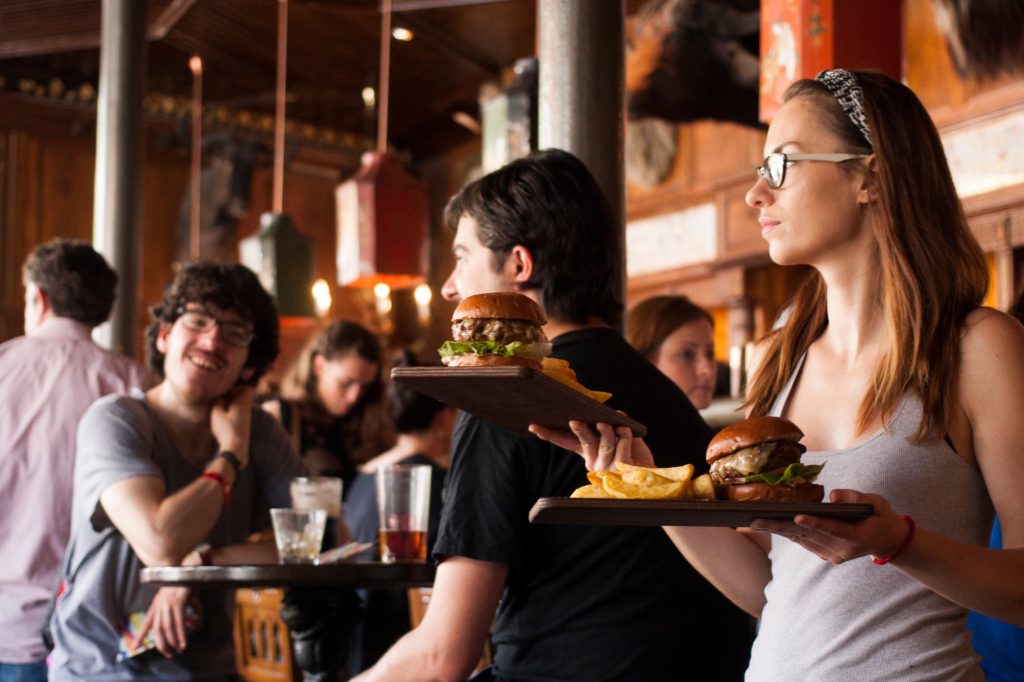In our previous three posts, we discussed what a customer data platform is, how to gather guest data, the insights you can discover, and how to create effective restaurant marketing campaigns.
This post with dive further into making those marketing campaigns even more effective and engaging for your guests.
Restaurant Guest Segmentation Using Your Customer Data Platform
Even in the face of the pandemic, marketing and business technology solutions continue to advance at a rapid pace.
Today’s marketers are enjoying an excess of tools and solutions to utilize when creating, executing, and measuring their restaurant marketing campaigns.
Many people, however, still think small even when they have technology capable of providing big returns.
Understanding and using technology effectively is necessary to get the most out of your marketing and advertising budget. And it is most effective and cost-saving to invest in a customer data platform that can consolidate these solutions into one platform.
This can be achieved with adequate training and a proper mental approach of those using the software.
Above all, marketers must have the detailed data required to create segmented, personalized marketing messages, and measure the marketing attribution of each campaign.

Every time a potential client opens a website on their desktop browser or smartphone browser, social media platforms, entertainment apps, and even productivity apps, they’re faced with all kinds of marketing messages.
How do you get the right eyes on your marketing content to promote your business effectively?
Successful restaurant and coffee shop marketing is essential for staying competitive in a highly populated industry. No matter where you’re located, you probably have to contend with various other competitors offering similar products to yours.
Like the competition for successful marketing, competition to successfully draw guests to your restaurant or coffee shop (and away from your direct competitors), should be top-of-mind.
After all, marketing is an ongoing process. You have to stay competitive and stay present on various internet platforms in order to attract clientele.
Thankfully, there are unique marketing strategies that you can utilize to your ultimate benefit.
Market segmentation is a particularly excellent way to boost return on investment from your restaurant’s marketing budget.
What Is Guest Segmentation?
Guest segmentation is a marketing strategy of “segmenting” your current and potential guests into distinct groups (market segments) and then marketing your business to them using focused, group-specific methods.
Guests are split into groups based on their demographic data–age, location, etc.–and their behavioral and psychographic data–what online content they interact with, how they behave at your place of business, and their perceived interests.
These groups are called guest segments, and each segment has its own persona. Different personae like to be marketed to in certain ways.
Based on marketing research, when you engage with clients with unique, individualized methods, you’re more likely to garner interest and ultimately draw leads to your website.
Marketers can successfully collect segmentation data, then optimize their marketing campaigns based on which “segments” they’re addressing with a given advertisement, social media post, etc.

How To Group Your Guests
You might wonder how the power of the internet and WiFi can split your potential clients into these segments. The answer lies in guest data collection.
There are ways to retrieve data to form customer profiles, which help you understand your guests better. Then, you can subdivide your restaurant guest database at large into segments.
You can also use software to collect and analyze data for much less than outsourcing these services to an agency. Check out the Bloom Intelligence WiFi Marketing Automation & Guest Intelligence Platform to see it in action.
Once you collect customer profile data, you can sort and filter profiles to view grouped segments. Then, use this information to create targeted marketing messages. Fine-tune your current marketing strategies or devise new ones to personalize the guest experience online.

Why Send Different Marketing Messages to Different Segments?
The ultimate goal of guest segmentation is to adjust your messaging to appeal to different segments. Guest segmentation helps certain demographic-specific businesses find their guests among the highly populated masses online.
For instance, cosmetic companies are probably looking for young, female clients that are particularly interested in beauty products. They’ll market themselves exclusively to this relevant segment.
Similarly, a skateboarding company knows that it isn’t relevant to the population at large. They will try to find relevant clients in urban teenagers and young adults.
So, marketing their products to seniors and middle-aged business people would produce little return on investment. Therefore, these companies would be wasting their marketing budgets without using effective guest segmentation.
The restaurant industry, meanwhile, has mass appeal. You aren’t necessarily looking to narrow down your audience as much as fine-tuning the voice of your marketing strategies to speak to different restaurant guests.
The voice of your marketing messages should be very different for older business people as it is for teenage skateboarders, but the message at the root of your strategy is the same: people should come to your restaurant!

What the Studies Show
Studies show that guest segmentation works and actually improves the guest experience, too.
CMO.com states that on average, advertisements targeted to unique guest segments are twice as effective as broad-audience, non-targeted ads. And, in fact, the Federal Trade Commission reports that almost 70% of polled consumers actually prefer marketing that tailors to their interests.
Guest segmentation isn’t just powerful; it’s popular.
Your direct competitors may very well be using this strategy. So, to stay competitive, you should as well.
How to Use Guest Segmentation
In the restaurant and coffee shop marketing industry, guest segmentation has plenty of benefits.
First, you can use this tactic to improve messaging. Messaging refers to your approach to communication with your audience.
How do you engage guests and highlight the value of your products? Modify your voice to speak to different segments of your customer base.
For example, if your restaurant has a formal, sophisticated ambiance, you might use professional language and elegant imagery to appeal to an older, higher-income segment of your audience.
Meanwhile, you can appeal to a younger, lower-income segment with more relaxed language and references to date nights or other special occasions.
Marketing messaging for your restaurant can be playful, refined, value-focused, or even exclusive – all based on who you’re speaking to.

Automate Guest Segmentation with Bloom Intelligence
Guest segmentation may seem like a difficult strategy to implement. Unfortunately, it can be very difficult to collect and analyze the data you need in order to segment clients without the use of a guest intelligence platform like Bloom Intelligence.
You can either hire a third-party marketing company to track guest data–a potentially expensive option–or save money and use Bloom to collect large amounts of guest data for you in real-time.
With Bloom, you can quickly and easily segment clients yourself and create targeted automated marketing strategies for much less. This will save money and time, increase guest lifetime values, bring in new guests, improve your reputation, and increase your bottom line.
To see more of what Bloom can do for your restaurant or coffee shop marketing, schedule a free demo today, or call us at 727-877-8181.





.svg)